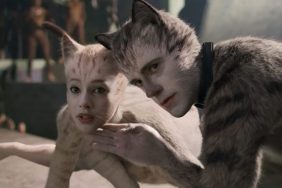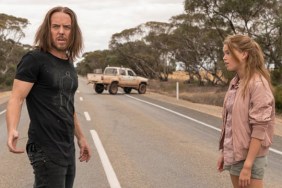Gerard Butler as The Phantom
Emmy Rossum as Christine
Patrick Wilson as Raoul
Miranda Richardson as Madame Giry
Minnie Driver as Carlotta
Ciarán Hinds as Firmin
Simon Callow as Andre
Victor McGuire as Piangi
Jennifer Ellison as Meg Giry
Murray Melvin as Reyer
Kevin McNally as Buquet
James Fleet as Lefevre
Critique:
Andrew Lloyd Webber’s musical version of the classic Gaston Leroux novel, Phantom to the Opera, has finally been turned into a major motion picture release. The Broadway production has a large following and is arguably the most successful stage musical of all time, with an estimated worldwide gross of $3.2 billion and over 100 million people having watched it. That is both a blessing and a curse to director Joel Schumacher. Many die hard fans will hate it and curse his name, but he also has a built in audience that should guarantee the financial success of the movie.
With all musicals, the majority of the film rests in the hands of the actors, and overall, they do great jobs. Of special note is Emmy Rossum, who is breathtaking as Christine. Her lovely singing voice highlights her natural physical beauty perfectly. Patrick Wilson (Raoul) and Miranda Richardson (Madame Giry) are also strong in their rolls, while Minnnie Driver (Carlotta) adds some much needed comic relief. Of all of the principles, the weakest is the Phantom himself.Gerard Butler does an okay job as the Phantom, but he will forever be compared to Michael Crawford’s much stronger stage performance.
Schumacher has made a lavish Phantom of the Opera. The sets are wonderful and the costuming is spectacular. All of the music from the stage show is on screen including additional background music and a new Webber song, made for the movie, running over the credits. The film closely follows the plot of live production, and that is where the movie stumbles. It might be the intimacy of having the actors right in front of you, but the stage show moves along at a good pace while the movie seems terribly slow. The largest departure from the stage version is that the film starts out black and white and is set in 1917. The entirety of the stage production is then told, in color, as a series of long flashbacks. Unfortunately, unless you know the production very well, you will have no clue as to who the different people are in the 1917 setting. I had the benefit of being able to go over the movie three times, just to make sure I knew who was who.
Technically the movie has some problems. The music is so well known that it seems that they overlooked that some of the sung dialog is almost impossible to understand, either due to the instrumentation overriding it or just being mixed way too softly. Additionally, the lighting of the sets is overly dark, with the characters often being needlessly masked by shadows. One scene, in particular, on the roof of the opera house is lit in a way which makes the architecture prominent and the characters just secondary.
Who should see this movie? The 100 million people that have seen the stage production will probably enjoy having a chance to see this version and contrasting the differences. It is a musical, so if you can not sit through two and a half hours of singing, you should avoid this at all costs. There is a fair amount of action, but there are long stretches of exposition between them. The few funny moments with Carlotta are not enough for people seeking a comedy. This is a terrific tragic love story told, mostly in song, and should win over new fans that could not go to any of the live productions.
Overall, the movie is a little disappointing since it did not live up to the magic and charm of the stage version. People that know the story very intimately could easily overlook some of the hard to understand aspects and enjoy the film more. Newcomers to The Phantom of the Opera might be a little lost, but at least it is a pretty world to be lost in.










